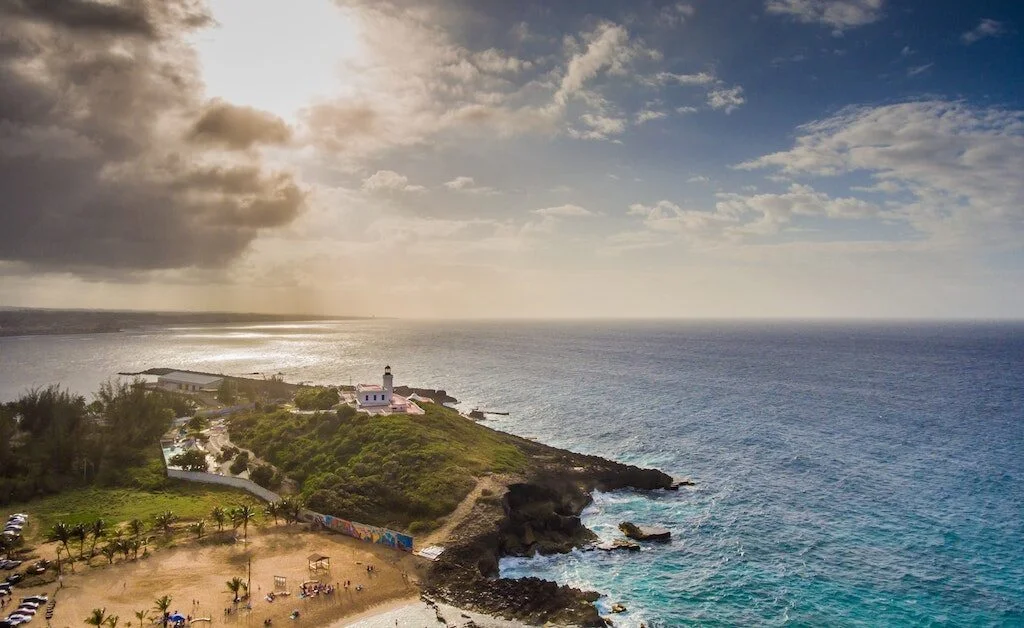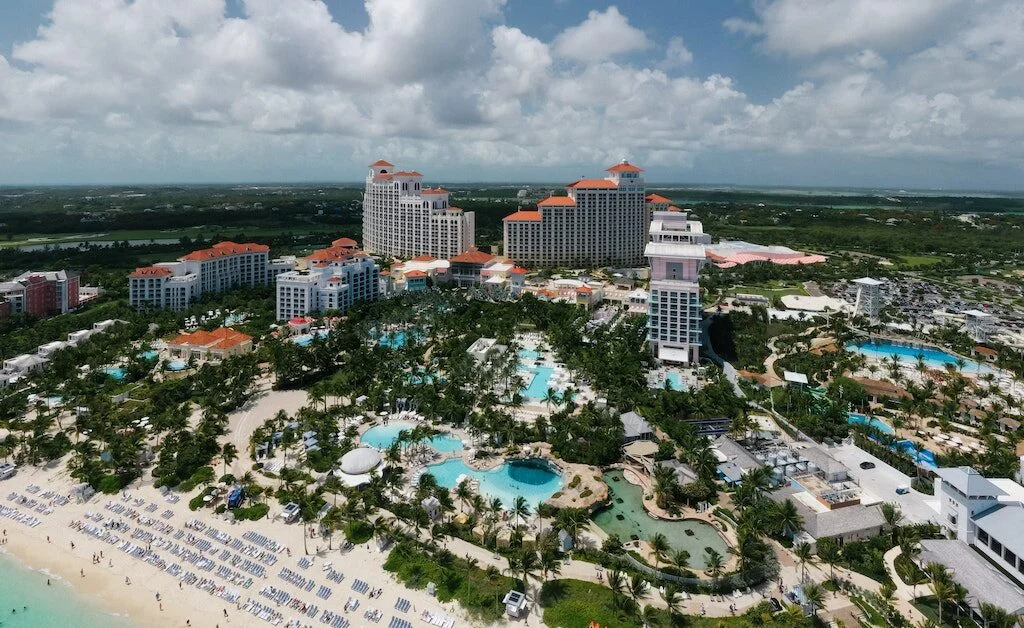Aruba, a sun-kissed Caribbean paradise known as the “One Happy Island,” offers an enchanting getaway for travelers seeking pristine beaches, vibrant culture, and outdoor adventures. As you plan your escape, understanding the ideal time to visit can greatly enhance your experience. The right timing ensures you make the most of Aruba’s distinct seasons, diverse activities, and unique climate attributes.

Understanding Aruba’s Climate
Situated in the southern Caribbean Sea, Aruba boasts a tropical climate that remains warm and inviting throughout the year. Remarkably, its strategic location below the Hurricane Belt shields it from the threat of major storms, ensuring a worry-free vacation. With an average temperature of around 82°F (28°C), Aruba maintains a consistent climate characterized by two primary seasons: the dry season and the rainy season.
During the dry season from January to mid-April, Aruba experiences clear skies, minimal rainfall, and comfortable temperatures. Sunshine is abundant, and the thermometer ranges from the mid-70s to the upper 80s. Conversely, the rainy season spans from June to November, featuring slightly higher humidity and increased chances of rainfall. Despite its name, Aruba’s rainy season receives less precipitation than many tropical destinations, with brief and passing showers.
Navigating the Seasons : Find you the best time to visit Aruba
Aruba’s climate offers three distinct seasons, each catering to different traveler preferences: the High Season, the Shoulder Season, and the Off-peak Season.
High Season
Running from January to mid-April, Aruba’s High Season aligns with the dry season, making it the most popular time to visit. This period delivers near-perfect weather with mild temperatures, minimal rainfall, and abundant sunshine. While the island thrives with activity and visitors, prices for accommodations, flights, and activities tend to rise due to the peak demand. Travelers seeking ideal weather and a bustling atmosphere might find the High Season their best match.
Shoulder Season : Best time to Visit Aruba
May serves as the transition month from the High Season to the Shoulder Season. During this time, the weather remains pleasant, but prices begin to decrease. The Soul Beach Music Festival in May adds an exciting cultural dimension to the island, attracting music enthusiasts worldwide. With fewer crowds compared to the High Season, the Shoulder Season offers a harmonious blend of favorable weather and budget-friendly options. This season consider to be the best time to visit Aruba.
Off-peak Season
Spanning from June to November, the Off-peak Season coincides with Aruba’s rainy season. Despite the slightly higher chance of rain, the island’s warm and welcoming atmosphere persists. Hotel prices drop significantly, presenting budget travelers with an excellent opportunity to explore Aruba without the peak season crowds. The warmer waters during this time also make it an attractive period for water-based activities. The best time to visit Aruba For budget travelers.

Exploring Aruba by Month
Aruba’s year-round charm ensures there’s no wrong time to visit this Caribbean gem. Lets’ discuss according to the month which month suits you well so you can plan your trip according to your preference .
January
January stands as a favored month to explore Aruba. With average highs of 86°F and lows of 76°F, the weather is ideal for relishing balmy Caribbean days. While January is a prime time to visit, bear in mind that prices and crowds may be higher due to its popularity. Rainfall is minimal at around 1.5 inches for the month.
February
February maintains the island’s appeal, with temperatures akin to January—ranging from 76°F to 86°F. Rainfall decreases significantly, averaging under 1 inch. Expect premium costs for accommodations, flights, and activities during this high-demand period.
March
March emerges as Aruba’s driest month, boasting an average rainfall of less than 0.5 inches. The temperature starting moving upward raging from 77 degree F to 87 Degree F. The island celebrates Flag Day in March, marked by vibrant parades, fireworks, and traditional performances.
April
April marks the shoulder season, making it an excellent time to visit. While temperatures can reach highs near 89°F, trade winds maintain comfort and minimize insect presence.
May
May features the Soul Beach Music Festival, a Caribbean highlight. The festival showcases concerts, nightclub events, and beach parties with internationally-renowned performers. The temperature of the is range from 80 degree F to 90 Degree F and the water here become 81 degree F range .Travelers can seize lower prices and smaller crowds as the off-season commences.
June
June ushers in the celebration of Dera Gai (St. John’s Day) on June 24th, marked by dancing, singing, storytelling, and jubilant festivities. This place Aruba experience the extreme hot with the temprature between 80 degree F to 90 Degree F .
July
July mirrors June with its hot and dry climate, making it appealing for beach enthusiasts. While being the off-season, families with school-age children often visit during this period.
August
August stands as one of the hottest months, offering temperatures of 80°F to 91°F. With minimal rainfall of approximately 1 inch, August is perfect for water-based activities like swimming and snorkeling.
September
September experiences the lightest trade winds and is the hottest month of the year. While it’s the least popular month for visitors, it’s a fantastic opportunity to find great deals and experience calmer surface waters for snorkeling.
October
October’s temperatures range from 80°F to 90°F, with increased rainfall averaging around 3 inches. Despite concerns about Caribbean hurricanes, Aruba’s positioning below the Hurricane Belt ensures a low likelihood of significant storms.
November
November holds the distinction of being the wettest month, receiving an average of 3.7 inches of rain. Despite the rainfall, temperatures remain warm, averaging between 78°F and 88°F.
December
Mid-December signals the onset of high season, characterized by heightened prices and crowds. Temperatures, ranging from 77°F to 87°F, remain pleasant, but rainfall increases slightly to around 3 inches.
Best Months for Activities
The optimal time for specific activities in Aruba varies based on individual interests and preferences.

Water Sports
For water sports enthusiasts, the warmer waters from June to October provide ideal conditions for snorkeling, scuba diving, and windsurfing. The calm seas and comfortable temperatures set the stage for exploring Aruba’s captivating underwater world.
Beach Relaxation
January to April offers the perfect setting for beach enthusiasts seeking relaxation. The dry season guarantees minimal rainfall, abundant sunshine, and warm temperatures, creating an idyllic environment for sunbathing and unwinding by the shoreline.
Festivals and Events
Throughout the year, Aruba hosts a diverse array of festivals and events that cater to various interests. From the Aruba Carnival in January to the Aruba Food & Wine Festival in November, there’s always a lively celebration to participate in. Travelers looking to immerse themselves in local culture and vibrant festivities should plan their visit accordingly.
Outdoor Adventures
Aruba’s favorable climate permits outdoor adventures year-round, regardless of the season. Whether it’s hiking in Arikok National Park, exploring natural pools, or embarking on a thrilling UTV tour, the island’s diverse landscapes ensure a fulfilling experience for adventure enthusiasts.
Distinct Aruba Season
Aruba’s unique geographic location and consistent climate set it apart as an exceptional year-round destination. Unlike destinations with dramatic weather shifts, Aruba maintains relatively steady conditions, further enhanced by its position below the Hurricane Belt. The dry season, from January to mid-April, is characterized by perfect weather and an influx of visitors escaping colder climates. On the other hand, the rainy season, from June to November, showcases the island’s lush beauty and presents an opportunity for budget-conscious travelers to explore without the peak-season crowds.
Choosing the Optimal Time to Visit
Selecting the best time to visit Aruba involves aligning your preferences with the seasons and activities that resonate with you. Whether you prioritize perfect weather, budget-friendly options, or a quieter atmosphere, Aruba offers something for every traveler’s preferences.
Considering Safety and Health
While Aruba is generally safe and secure, it’s essential to be aware of potential natural threats and take necessary precautions. The island’s strong sun, sea conditions, and wildlife should be approached with caution to ensure a comfortable and secure vacation experience.
Navigating Natural Threats
Aruba’s consistently sunny weather requires vigilant sun protection, especially during peak hours. Additionally, while the sea offers calm waters for activities, it’s crucial to adhere to safety guidelines to prevent accidents. Respect for wildlife and appropriate footwear further contribute to a safe and enjoyable stay.
Choosing the Right Time for Different Travelers
The best time to visit Aruba varies according to traveler profiles. Families with school-aged children may prefer the summer months, while couples seeking romance might find the Shoulder Season in May most enchanting. Solo travelers can immerse themselves in the vibrant atmosphere of the High Season, while budget-conscious adventurers can capitalize on the Off-peak Season’s cost savings. Regardless of your traveler type, Aruba caters to your preferences.
Balancing Weather and Tourist Crowds
Finding the balance between optimal weather and manageable crowds is vital when planning an Aruba trip. Each season presents its advantages and challenges. The High Season offers remarkable weather but increased crowds and prices. The Shoulder Season strikes a harmonious balance, while the Off-peak Season offers tranquility and budget-friendly options despite the potential for brief showers.
Conclusion :
Aruba’s timeless allure invites travelers to explore its beauty and culture year-round. By understanding the diverse seasons, considering personal preferences, and evaluating the pros and cons of each period, you can tailor your Aruba experience to create lasting memories. From idyllic beaches to exciting festivals, this “One Happy Island” promises a remarkable journey.
As Aruba continues to evolve, there might be shifts in travel trends and attractions. Stay informed about upcoming developments, potential changes in climate, and emerging travel opportunities. By staying updated, you can make informed decisions for your future visits to Aruba.
Aruba’s year-round charm ensures there’s no wrong time to visit this Caribbean gem. Whether you’re a sun-seeker, an adventurer, or a culture enthusiast, Aruba’s diverse offerings cater to your desires. Embrace the joy of exploring this welcoming paradise, and remember that no matter when you visit, Aruba promises a vacation filled with happiness and unforgettable experiences.
Read More : Exploring the Best of Aruba: A Paradise for Sun, Sea, and Adventure










